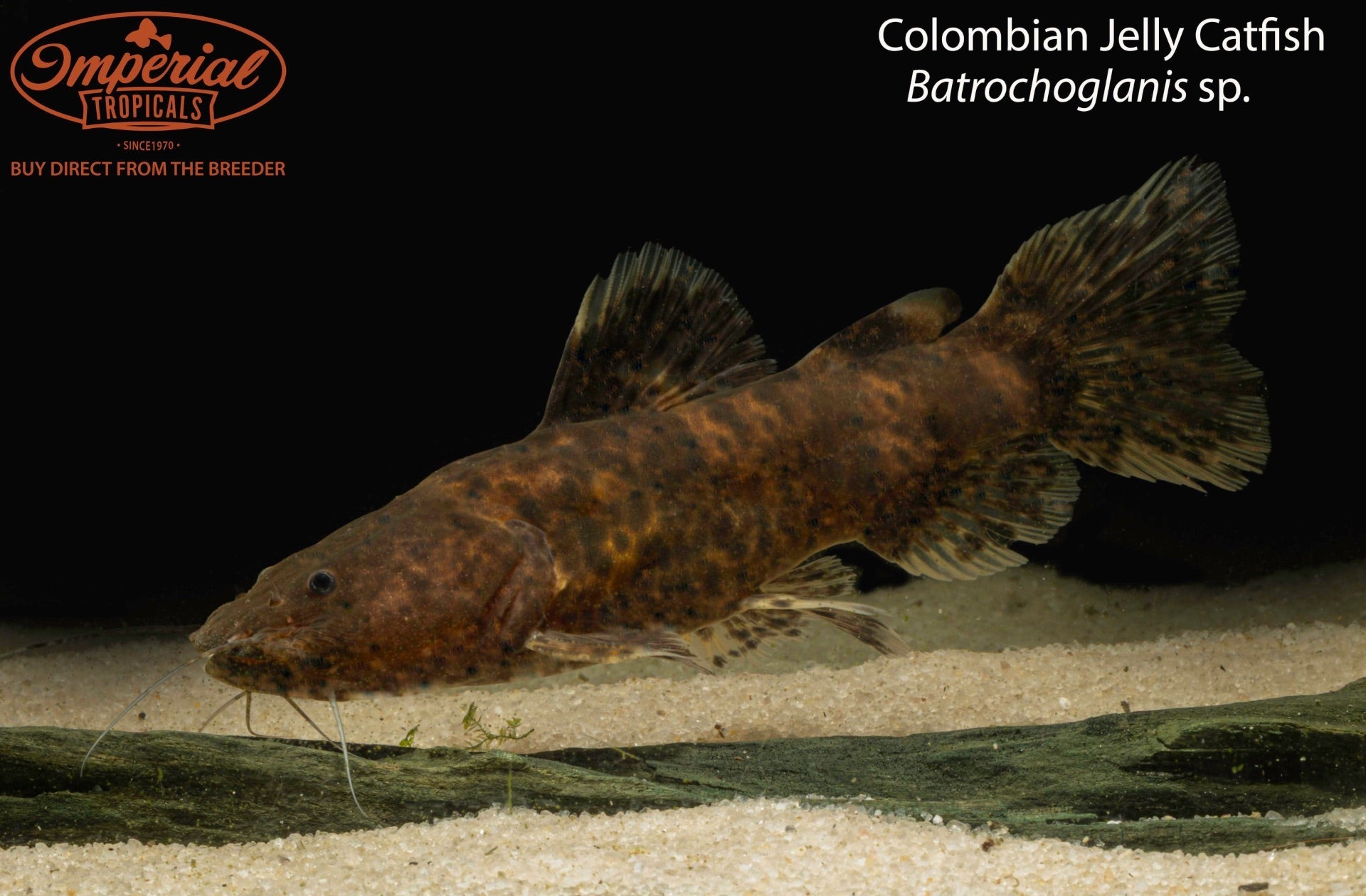
Remarks: These jelly catfish were imported from Colombia but it is not certain as to which exact species they are. We do know they belong to the Batrochoglanis genus and have found their care, size, and behavior are very similar to other members of the genus. Colombian jelly catfish have a very attractive pattern consisting of black, brown, and tan mottling set on wide vertical bands. They have long and wispy white whiskers that assist them in detecting prey and their surroundings. On the head and along their lateral line are some interesting white bumps that may be mistaken for ich upon first glance. However, upon further inspection, it can be noted that unlike the random placement of ich spots, these are organized in a recognizable pattern. This is because these bumps are connected to their specialized organ that helps jelly catfish sense movement and electrical pulses in the water put off by other fish. This organ is present in nearly all species of fish, the Colombian jelly catfish just gives a more visible indicator of it and is able to utilize it very effectively.
The Colombian jelly catfish tends to inhabit calm, soft, acidic, and heavily tannin-stained waters that often have low visibility due to silt suspended in the water column. This low visibility means these nocturnal ambush predators must rely on their lateral line and sensitive whiskers to help them detect prey. They will lie in wait until a possible prey item comes within range before they strike with surprising speed. With their large mouths, jelly catfish can consume very large prey items and this should be taken into consideration when looking to keep them in captivity. Any fish that is not significantly larger than the jelly catfish is a possible meal. It should also be noted these fish claim large territories on the bottom of the tank so any other bottom dwellers will likely be seen as competition resulting in fights that could end in injury or even death for the fish involved. With their voracious appetite and territorial nature, it is needless to say that the jelly catfish is a fish best kept alone.
Jelly catfish, like most catfish, are nocturnal and dislike bright light. To help encourage them to feel safe and confident enough to explore their tank, keep the lighting dim and provide plenty of dark hiding spots. An interesting thing to note is that they usually will end up with a favorite hiding spot over time so long as their surroundings do not change. The substrate should not be abrasive with soft sand being the best choice as the soft bellies of jelly catfish can get damaged if there are any sharp pieces. It can be challenging to keep plants with jelly catfish as they can dig them up frequently so plants that grow on structures and tolerate low light such as anubias are the best choice if wanting to keep them in a planted set up. While they are typically hardy, frequent water changes are heavily recommended as jelly catfish can produce a lot of waste. Feeding usually consists of large, meaty items such as frozen thawed silversides and earthworms with older fish needing to be fed far less frequently than younger individuals. As all jelly catfish are wild caught, some may need to be started on gut-loaded feeder fish then gradually weaned onto prepared foods. With time, some will even start taking to sinking tablets and gel foods. It is not recommended to use feeder fish if the jelly catfish is accepting prepared foods as feeder fish typically are very poor in regards to nutrients and carry the risk of passing disease onto the jelly catfish. With proper care, jelly catfish can be wonderful and fascinating pets for many years.

